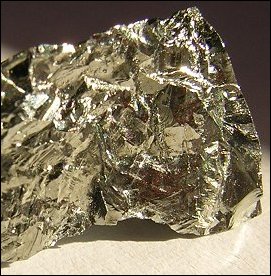| General Chemistry is a free introductory textbook on chemistry. See the editorial for more information.... |

|

Home  Chemical Elements Chemical Elements  Carbon Group Carbon Group  Germanium Germanium |
|||||||||||||||||||
| See also: Periodic Table of the Elements | |||||||||||||||||||






|
|||||||||||||||||||
GermaniumAuthor: Robert Husted, Mollie Boorman
History(Latin Germania: Germany) Mendeleev predicted the existence of Germanium in 1871 as
ekasilicon, and the element was discovered by Winkler in 1886.
Sources
The metal is found in
The element is commercially obtained from the dusts of smelters processing zinc ores, as well as recovered from combustion by-products of certain coals. A large reserve of the elements for future uses in insured in coal sources. Germanium can be separated from other metals by fractional distillation of its volatile tetrachloride. The techniques permit the production of germanium of ultra-high purity. PropertiesThe element is a gray-white metalloid. In pure state, the element is crystalline and brittle, retaining its luster in air at room temperature. It is a very important semiconductor. Zone-refining techniques have led to production of crystalline germanium for semiconductor use with an impurity of only one part in 1010. UsesWhen germanium is doped with arsenic, gallium, or other elements, it is used as a transistor element in thousands of electronic applications. The most common use of germanium is as a semiconductor. Germanium is also finding many other applications including use as an alloying agent, as a phosphor in fluorescent lamps, and as a catalyst. Germanium and germanium oxide are transparent to the infrared and are used in infrared spectroscopes and other optical equipment, including extremely sensitive infrared detectors. The high index of refraction and dispersion properties of its oxide's have made germanium useful as a component of wide-angle camera lenses and microscope objectives. The field of organo-germanium chemistry is becoming increasingly important. Certain germanium compounds have a low mammalian toxicity, but a marked activity against certain bacteria, which makes them useful as chemotherapeutic agents.
|
|||||||||||||||||||
Home  Chemical Elements Chemical Elements  Carbon Group Carbon Group  Germanium Germanium |
|||||||||||||||||||
Last Update: 2011-02-16


